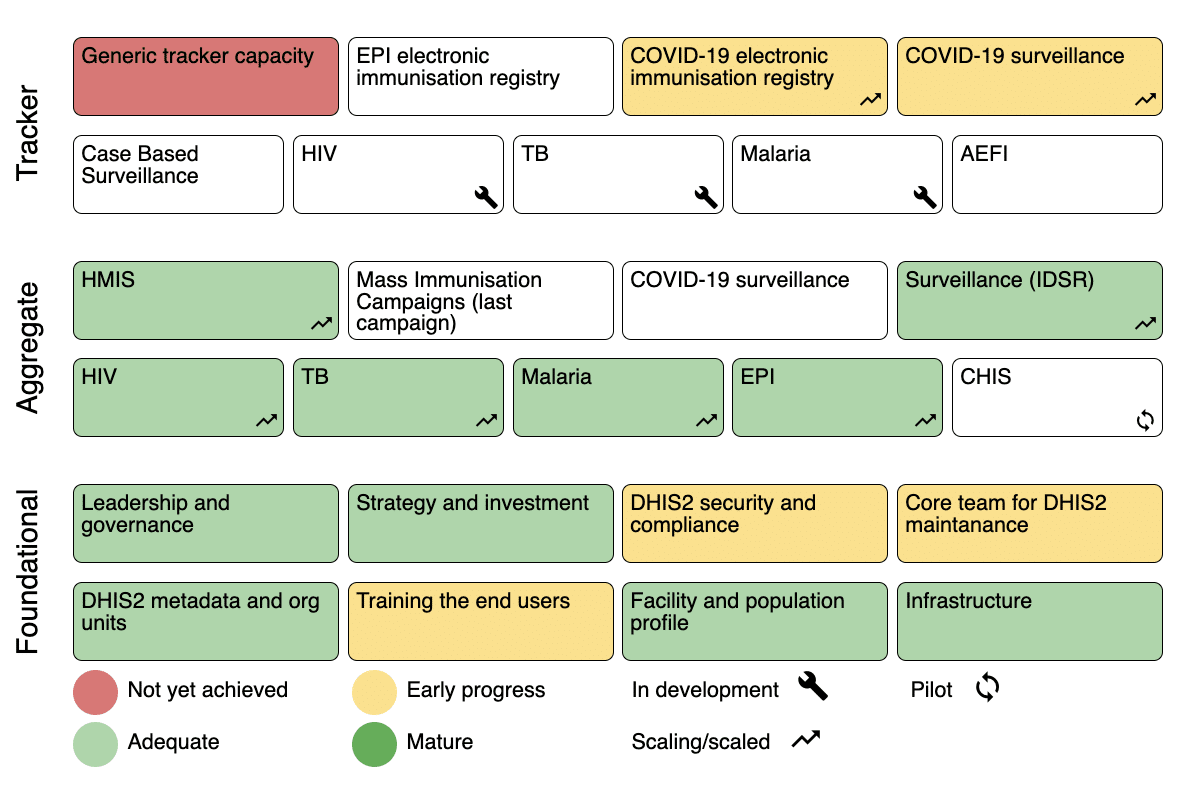“Having a systematic, robust and quantifiable measurement of where country systems are in terms of development and maintenance of digital health systems enables us to prioritize and undertake strategic and effective investments. The DHIS2 maturity profile is a systematic way to establish this baseline and monitor country progress. It raises the visibility of foundational areas like governance and system maintenance that might otherwise be under-prioritized. It also helps align investments across partners.”
Nathalie Zorzi
Senior Manager, Monitoring Evaluation & Country Analysis Team
Program Monitoring Department
The Global Fund
